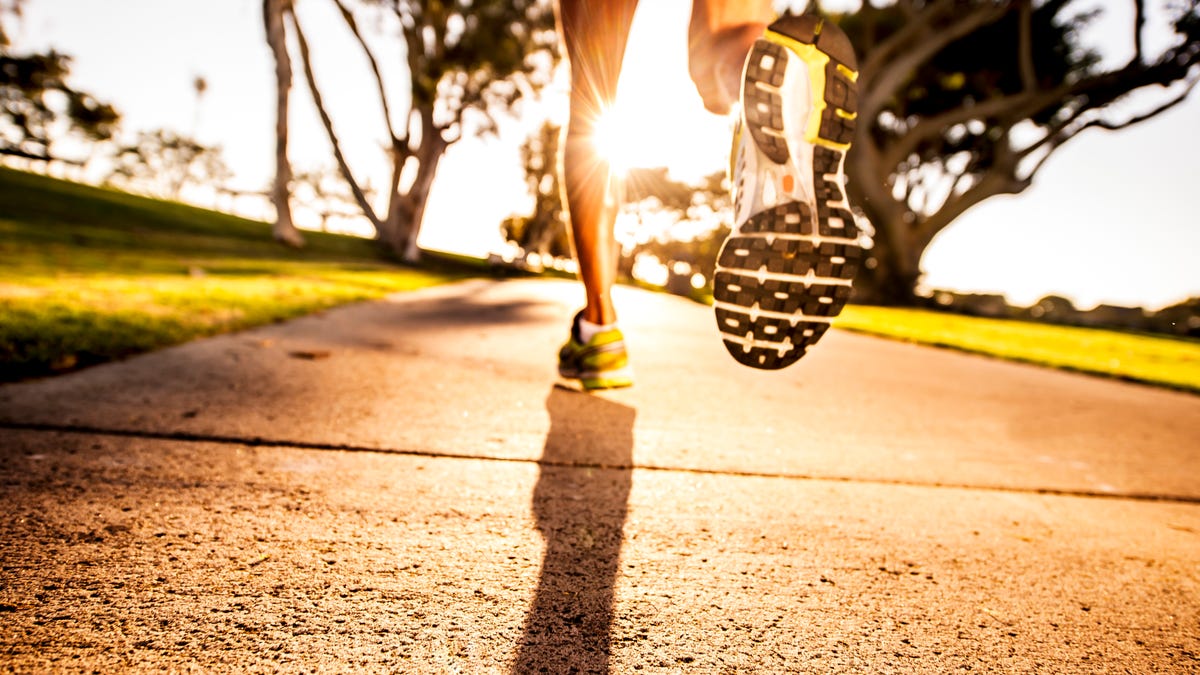Battery-free wearables of the future could run off your footsteps
An energy-harvesting insole would use your own body movements to provide power for your devices.
All that walking you're doing to meet your daily step-count goal could soon start paying off -- and not necessarily in the way you expect.
Yes, it will it make you healthier, but it could power your activity tracker, too, thanks to an insole that sits inside your shoe and harvests energy from your footsteps.
Researchers at the University of Southampton, England, have designed the removable insole to collect the kinetic energy generated by the movement of your body and the pressure of your feet hitting the ground. This kinetic energy is then transformed into electrical energy that can be used to power small devices.
"The most realistic application is to extend the battery hours, but the ultimate goal of our research is to make wearable devices battery-free," said electronics and computer science researcher Jerry Luo, speaking at the Wearable Technology Show in London on Wednesday.
Feeble battery life often tops the list of people's complaints about their various smart devices. Batteries are also space hogs, and when companies like Apple and Fitbit design wearables, there's always a trade-off between battery life and device size. There's the inconvenience factor too -- the charging process, however quick, is a pain. Your footsteps are never going to keep your household lights on, but they might be a lifeline for the smaller gadgets that are increasingly appearing in everyone's lives.
It will primarily be up to those making wearable gadgets and smart clothing to figure out how best to put the insole to use, but the researchers have come up with a few ideas of their own, including identification, indoor tracking and activity measurement.
Other ventures are also looking into what might be called smart shoes. Samsung Creative Labs spinoff Iofit, for instance, has created footwear that uses pressure sensors paired with an app to show you information about your stance and golf swing.
The Southampton research team, meanwhile, has been gauging interest from apparel companies like Adidas, Brooks and New Balance to see if they have any interest in using the technology. The response, said Luo, has been positive.
But the first real-life application of the insole will be in medicine. The research team has partnered with a local hospital to replace balance and foot pressure tests conducted on recovering patients in time-consuming clinics with continuous measurement thanks to the insoles.
The insoles are only able to transfer power to devices that are close to them, so aren't ideal to use with smartwatches or anything too far up the body, according to Luo. The same technology could be used to power a smartwatch, but would have to be incorporated into clothing instead, picking up vibrations in the fabric and from arm movements.
The insole is still a work in progress, but over the course of the last six months, massive leaps have been made in the amount of power that the insole can transmit. It's gone from being able to send a single byte of information (that is, roughly enough to encode a single character of text) to powering a sensor chipset.
The next step for the insole will be to build partnerships with tech companies, as well as to improve the design of the product, which has not really been a focus until now. "It's not really fashionable," said Luo. "But it is scientifically interesting."


